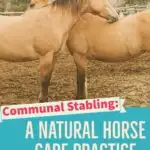American horse owners generally avoid pasturing horses alone, but always stable horses one-per-stall. Why do we stall horses separately and is it possible that alternative stabling might be cheaper, easier, and healthier for many horses? Read on to learn more.
Do Horses Need Their Own Separate Stalls?
Short Answer: In traditionally built barns, Yes.
Explaination: Whether a horse needs its own stall depends on the horse and on the particular stall. If your barn has standard 12×12, or even 12×16 foot stalls, then they are too small for average-sized horses to be paired up together. 12’x12′ is a fairly small space for a large animal like a horse, and sharing the stall with another horse (instead of having separate stalls) often leads to one horse being injured by the other. This is particularly dangerous because if one horse turns on the other horse, the horse being hurt is unable to run away and escape in the way they could if outdoors.

If you are considering stabling options for a barn that is not already segmented into average size stalls, however, there are a number of alternate stabling options that allow both for horses to be safe AND benefit from the calming effects of being stabled with their herd. To evaluate these options, we’ll next talk about how to judge if your horse can be group stabled, and how to evaluate if your barn can be configured to group stable safely:
Communal Stalls and Group Stabling
Successful group stabling depends upon a group of horses who can co-exist with minimal dominance-related scuffles in an environment that helps keep the group happy together.
For some horses, communal stabling (or shared stalls) may be the solution to behavior problems, stress-related health issues, and even excess energy and head tossing during riding. By keeping a horse with their herd- which both relaxes and provides healthy stimulation- many horses will have a little less energy under saddle, spend less time bored, and will experience lower levels of stress hormones (which are linked to poorer health).
Horses who Benefit from Group Stabling:
- Horses that tend to adjust quickly to new turnout groups.
- Horses that get along well in herds but who exhibit vices when stalled
- “buddies” – horses who naturally pair up and partner together when turned out with a herd.
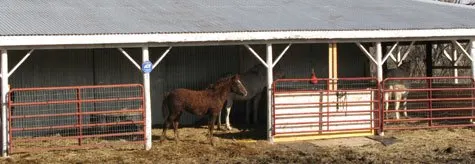
Never group-stable horses who tend to pick fights with other horses, constantly try to assert dominance, or who are routinely picked on by other horses. (These horses can only be group stabled in large indoor areas and only after many months to settle in with the group in a large outdoor turnout).
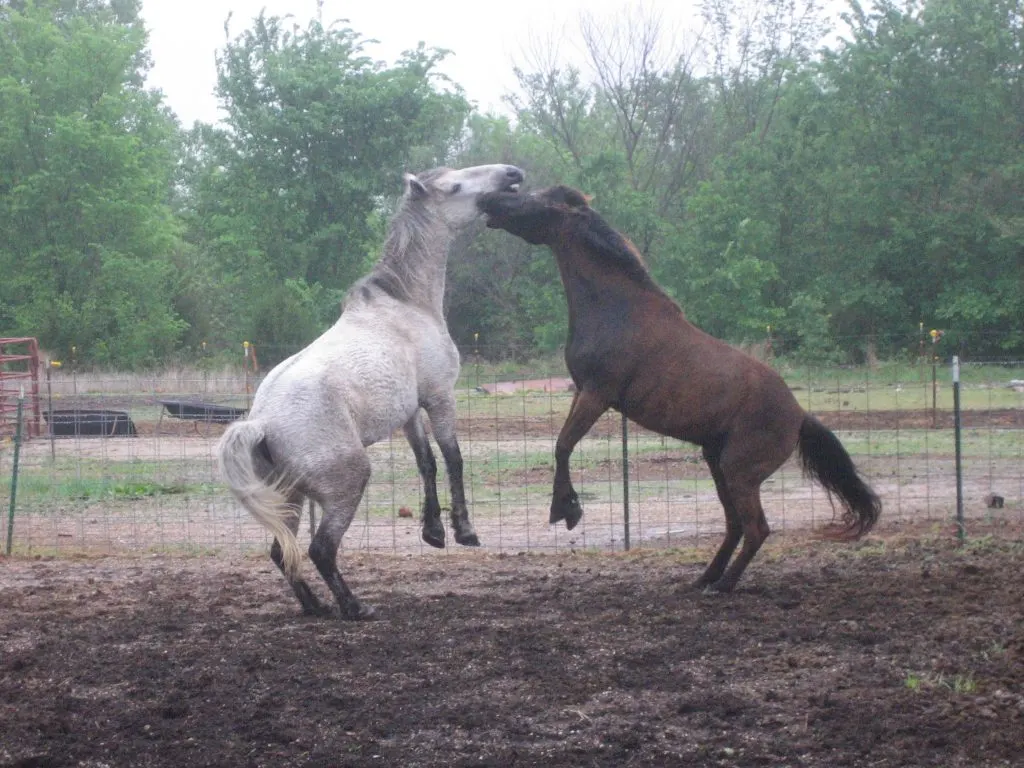
Barns Setups that Accommodate Group Stalls:
There are several types of communal stabling:
Shared Stalls
The most basic type of communal stabling in shared stalls. Large (16×16 or larger) stalls can be shared by two individual horses who have already established “friends” and who demonstrate an ability to get along well without scuffles during daytime turnout. This is most commonly seen when one high anxiety performance horse is paired with a smaller pony for companionship. Visiting a German Olympic farm, we saw this practice at work- pictured below. Each horse needs space to lay down on their side and stretch out.
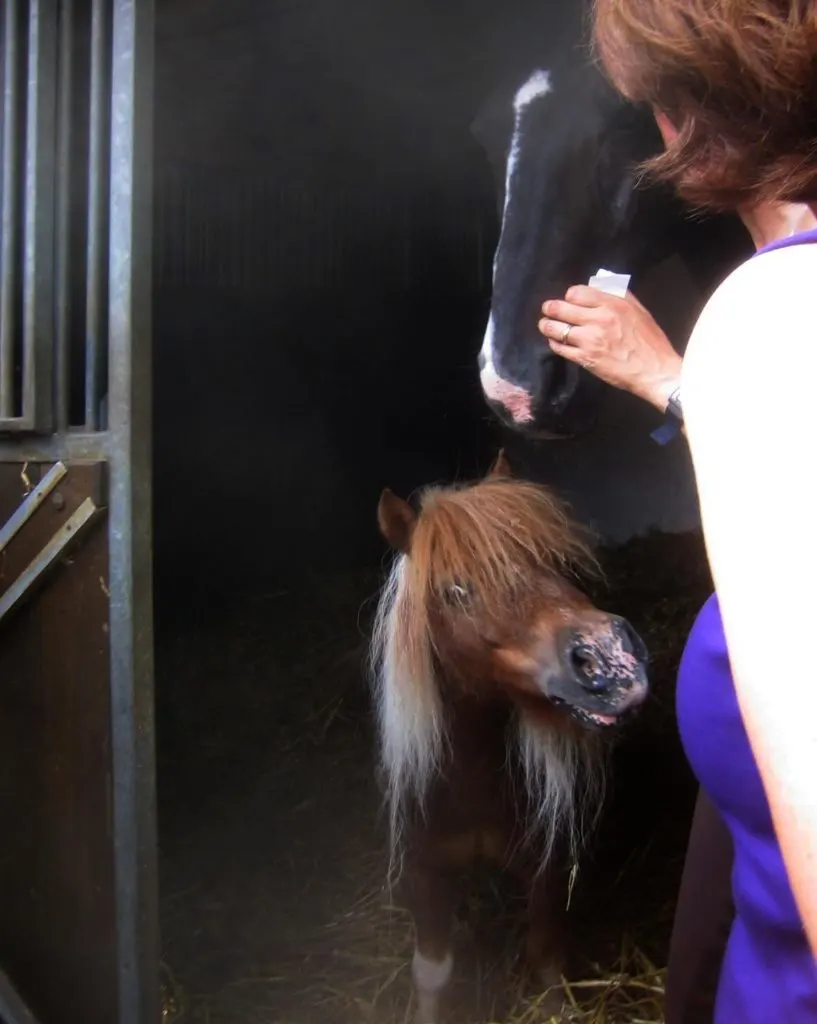
Overnight Turnout in an Indoor Arena / Round Pen
If you have a covered indoor arena or round pen that sits empty while horses are placed in stalls overnight, consider improving your horses’ social well being by selecting a few to begin overnight turnout in unused round pens or arenas. These areas are ideal for group stabling, because they are generally spacious and have no tight corners where one horse might pin another.
Open Stabling
Similar to turnout in an indoor arena, open stabling is an open-format barn that lacks the walls, doors, gates, and bars of contemporary stabling. An open stable can be a simple a metal pole barn (with kick guards) or a space semi-divided with pipe fencing or even corridors of electric fencing to separate individual groups of horses.
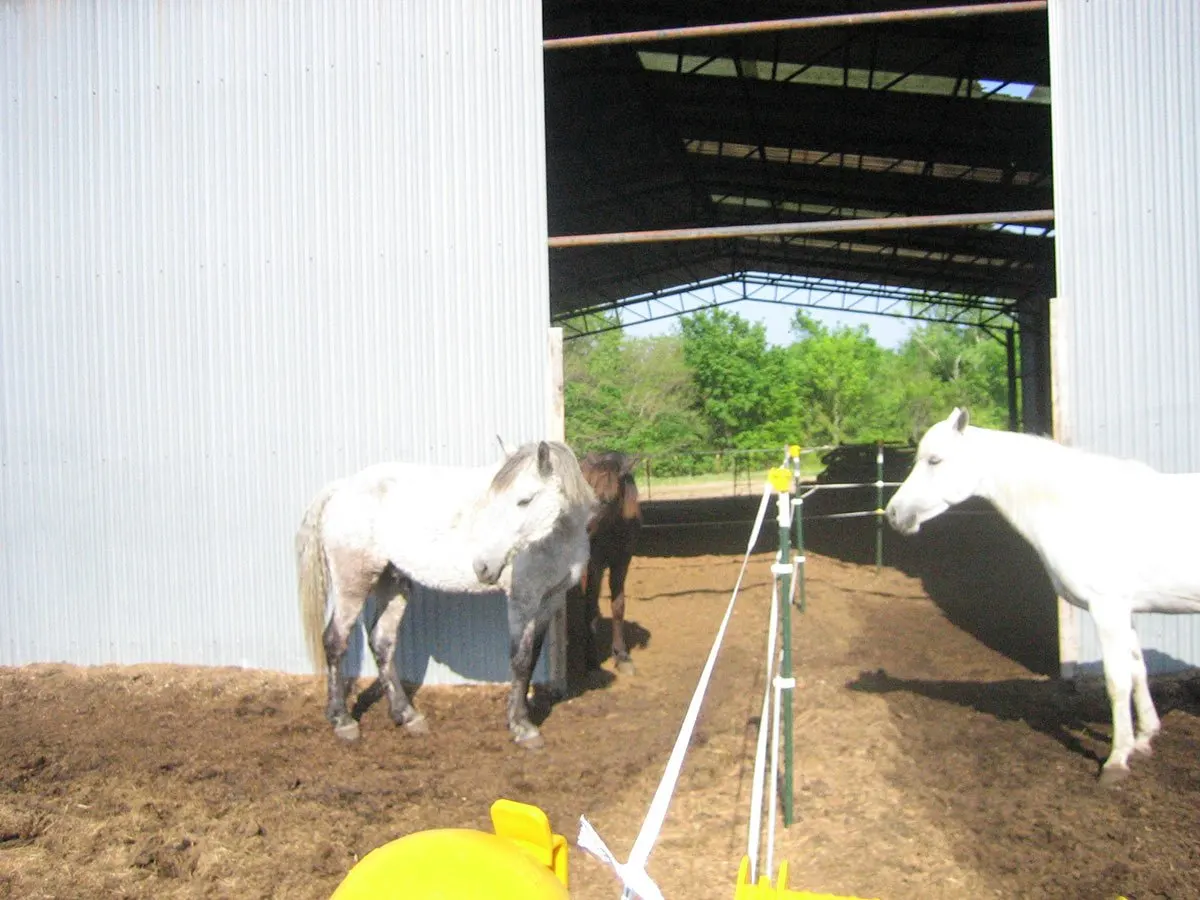
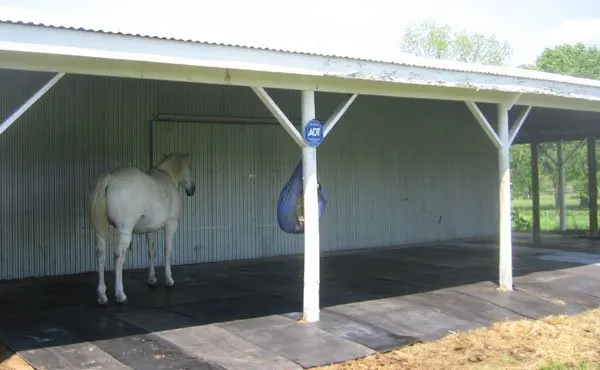
Feeding Horses in a Shared Stall
Feeding time is often when most fights between horses will break out, so feeding needs to be handled differently with different horse groups. Some group stabled horses will have diets that are similar enough, and herd dynamics established enough, that you can simply distribute buckets and feed without issue. Other herds will need individuals separated for feeding to make sure they get enough food and any supplements and medications specific to the individual horse.
In our group stalls, we solve the issue of distributing supplements and defusing arguments by using a very old solution: feed bags. All-but gone from modern horse care manuals, feedbags are actually a perfect solution for making sure each horse gets their food with no chance of another horse running them off their food. When feed time is over, the horses individually visit the gate to have their feed bags removed and the herd is happy and fed.
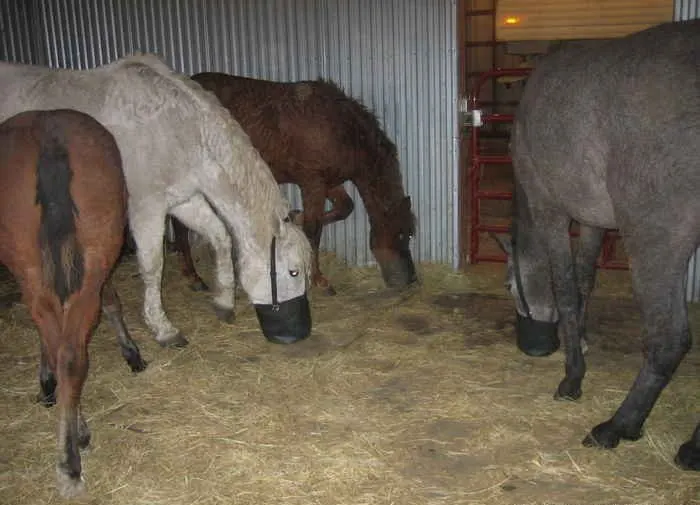
Should horses not be kept in stalls?
When horses live in a herd and have access to massive amounts of pasture and plenty of natural cover from weather, horses can happily live without stalls. Because few of us have the resources to support an entire herd of horses on a very large amount of land, stalls and run in horse shelters are a good way to keep horses happy, safe, and healthy. While being kept in stalls 24 hours a day is harmful to horses both physically and psychologically, many horses love returning to their stall at night. Stalls benefit horses by helping them stay warm and rest better.
Why do horses rest better in stalls? In the wild, horses live in herds, and one horse always stays awake and at watch. If a horse lives alone in a pasture or just with one or two other horses, the horses may not rest as well. With a stall inside a closed barn horses are kept safer from predators (or pests) and their senses aren’t so overwhelmed by monitoring their surroundings.
How long can a horse stay in a stall?
How long a horse can stay in a stall varies dramatically according to the context. Just like people who are ordered by a doctor to have “bedrest” after an injury or surgery, sometimes veterinarians prescribe “stall rest” for horses. Horses under stall rest remain in their stall 24 hours a day, (perhaps being led on a short walk depending on the severity of their injury).
Even for healthy horses, a humane duration of stabling can vary dramatically. For horses kept in urban environments, it’s not uncommon for a horse to remain in their stall most of a day- taken out of their stall only for being ridden or otherwise exercised. While some of these horses develop boredom habits (called “vices“) many of these horses do fine in this environment: stimulated by constant activity in the stable aisle and socially interacting with horses on each side of them.
If you are a new horse owner wondering about how long it’s okay to leave your horse in a stall each day, read our guide to how long horses can stay in stalls.

